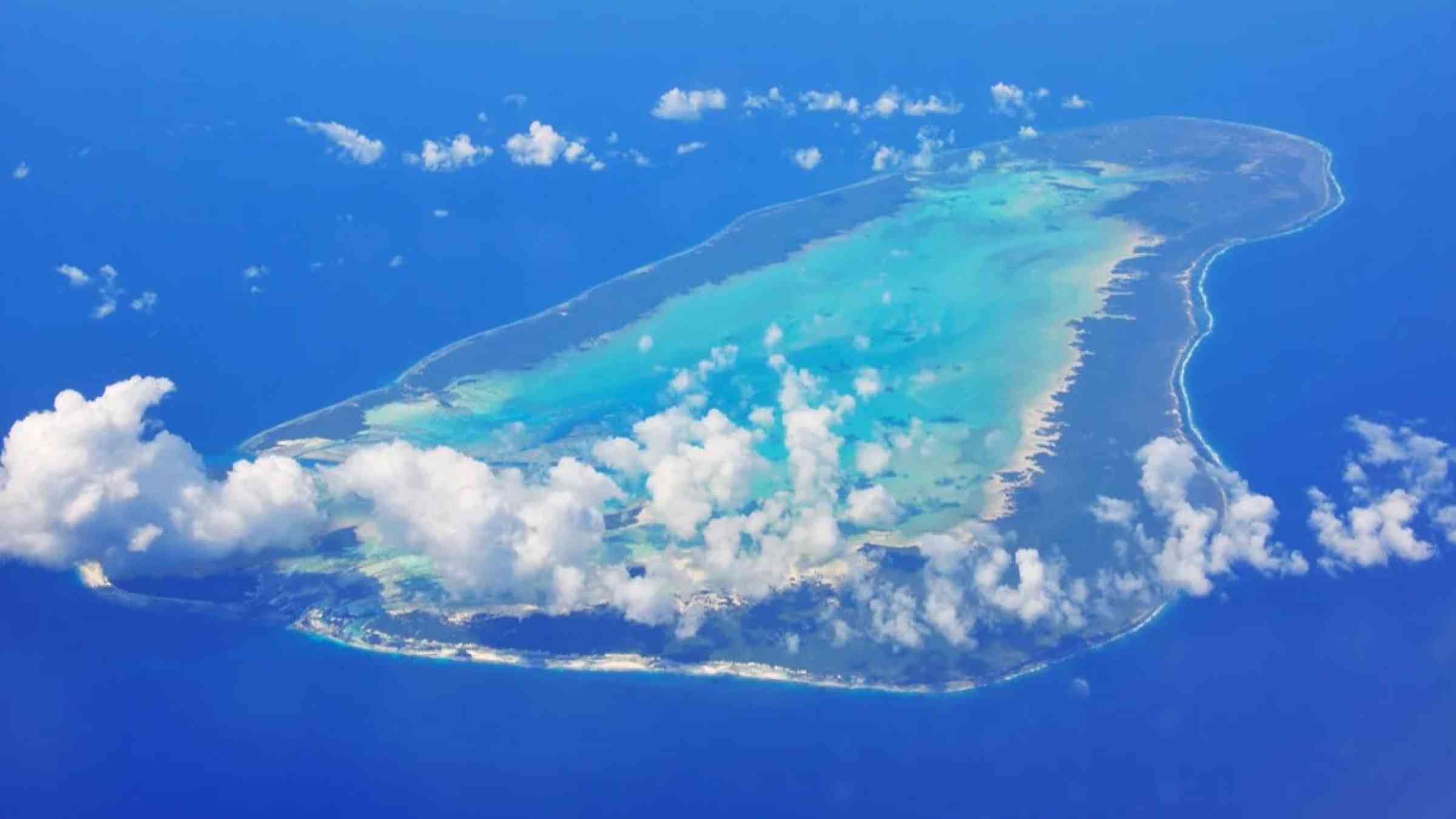
With global sea levels projected to rise 44 centimeters (17 inches) by the end of the century, atolls such as Aldabra-a United Nations Educational, Scientific and Cultural Organization (UNESCO) World Heritage Site in Seychelles and home to the world's largest population of giant tortoises-may be at risk of sinking into the ocean.
A new study, however, shows that despite consistently rising sea levels, most of Aldabra's shoreline hasn't changed since 1960.
Despite climate change, Aldabra Atoll's shoreline is (mostly) stable
An atoll forms when corals attach to the margins of a volcanic island or platform in the ocean. Over time, the volcano is eroded and subsides into the sea, leaving a ring-shaped reef. Winds and waves deposit crushed coral from surrounding reefs on top of the ring, ultimately forming islands that rise above sea level. Four large islands ring Aldabra's central lagoon: Grand Terre, Malabar, Picard, and Polymnie.
Most of the world's coral atolls are found in the Pacific and Indian oceans. Well-known atolls include Maldives, a popular tourist destination, and Bikini, which the United States used as a nuclear test site until the 1950s. Aldabra has the distinction of being one of the highest atolls, with an average height of 8 meters (26 feet). For comparison, Maldives have an average elevation of 1 meter (3.3 feet).
Their low elevation makes atolls especially vulnerable to rising sea levels.
"Atolls are dynamic and have adapted to grow vertically with changing sea levels over hundreds and even thousands of years," Annabelle Constance, a conservation and spatial ecologist at the Seychelles Islands Foundation and first author of the study, wrote in an email to Eos. "However, this balance relies on the availability of loose sediments from nearby coral reefs."
As reefs deteriorate in increasingly hot, acidic oceans, those sediments are becoming scarce, making it harder for atolls to keep up with rising sea levels.
In the new study, researchers from the University of Zurich and the Seychelles Islands Foundation traced changes on Aldabra's shorelines, using aerial and satellite images from 1960 to 2011. The results were surprising.
Constance noted that "61% of the shoreline remained unchanged, while the areas that did change averaged about 25 centimeters per year-lower than the global average for atolls." This rate of change includes both erosion and accretion: Stretches of shoreline that were eroded lost an average of 25 centimeters (10 inches) per year, whereas accreting areas gained land at the same rate.
The authors also noted local differences. Aldabra's outer shoreline, which borders the open ocean, changed at an average rate of 15 centimeters (6 inches) per year. The inner shore, which encircles the atoll's central lagoon, changed at the much higher rate of 32 centimeters (about 13 inches) per year.
Shoring up against rising sea levels
Aldabra's remarkable resilience is likely due to its geologic history, explained Paul Kench, a coastal geomorphologist at the National University of Singapore who was not involved in the study. "The key difference is that much of the shoreline has been above sea level for the last 125,000 years and has become lithified (cemented)," Kench wrote in an email to Eos.
This historic cementation explains why the atoll's inner and outer shorelines change at different rates: Much of the outer, ocean-facing shore consists of solid limestone ridges, whereas the inner shore features more loose sediments that haven't had time to lithify. "This affords the ocean shoreline greater resistance to the impacts of sea level change," Kench wrote.
A lack of human habitation is probably another contributing factor to Aldabra's ability to stay above water. Mangroves on the atoll were harvested for timber until Aldabra became a protected site in the 1970s. Since then, the shoreline of one of the atoll's islands, Picard, has accreted up to 161 meters (528 feet) as flourishing mangrove forests trap and retain sediment. The study's authors suggest that reducing destructive activities such as logging and construction could help other atolls shore up against rising sea levels.
"Our research shows that Aldabra's resilience to sea level rise is likely linked to its high protection status. This serves as a crucial lesson, especially now, when a significant tourism development within the Aldabra group of islands just started," Constance wrote, referring to the planned construction of a luxury resort on Assomption Island, around 30 kilometers (19 miles) south of Aldabra. "We need to preserve these unique ecosystems to ensure their continued resilience."